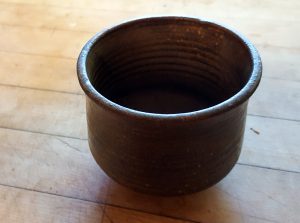 Thirty spokes meet at the wheel’s axis
Thirty spokes meet at the wheel’s axis
The center space makes the wheel useful.
Form clay into a cup;
The center space gives it purpose.
Frame doors and windows for a house;
The openings make the house useful.
Therefore, purpose comes from what is there
Because of what is not there.
Tao Te Ching, Chapter 11
In one of my favorite passages, the Tao Te Ching reminds us of the essential power of the empty space, what the Japanese call yohaku.
In an old Buddhist legend, an accomplished young man came to a teacher seeking enlightenment. He introduced himself, reciting his list of accomplishments while the master poured tea. As the man talked on, the master continued to pour until the tea spilled over the sides of the cup.
“Stop!” said the young man. “Can’t you see what you’re doing?”
The old master smiled, eyes twinkling as he replied, “You cannot fill a cup that is already full.”
The young man was full of himself, full of ego. To learn anything new, he would have to empty his cup.
Likewise, to keep learning and growing, we must empty ourselves of preconceptions, suspend judgement, clear away the clutter of our minds. This is the vital lesson of yohaku, the “white space” or the background in an ink painting, which adds balance and beauty to the whole.
An expression of yin, the “empty space” so much a part of the Tao, yohaku is the space of contemplation, insight, and creativity.
What about you? Take a mindful moment now
- To close your eyes,
- Take a slow, deep breath and slowly release it.
- Then ask yourself,
“Do I have enough space in my days?”
“Where do I find my yohaku?”
Namaste,
Diane
